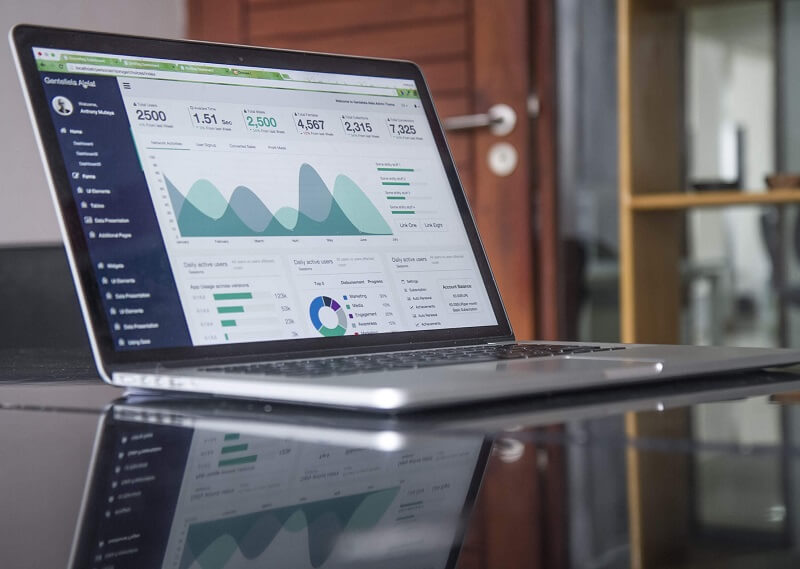Ecommerce Analytics: How To Use Data To Drive Sales

Since Covid began, Ecommerce was one of the most successful industries. That hasn’t changed in recent years, as more and more people rely on end-to-end online purchases for all kinds of products and services. With this greater reliance on online shopping came the subsequent increased value of Ecommerce analytics. Here are a few practical uses for the most fundamental data-driven sales strategies that are sure to improve conversions.
What Is a Data-Driven Sales Campaign?
Back in the day, sales worked with a far simpler mindset: the more people your product or service reaches; the higher the chances of making a sale. Much of what made sales campaigns successful in the past was the know-how of the sales team and their ability to sell a product or service.
The modern landscape of Ecommerce is not as simple. Modern data-driven sales take a more surgical approach. Using data collected throughout previous sales campaigns, surveys, and other forms of research, sales teams can tailor their strategies to be more accurate and personalize them to specific demographics of prospective buyers.
Benefits of Data-Driven Sales In Ecommerce

As someone working in Ecommerce, be it as a platform owner or a third-party vendor; what are the practical benefits of data-driven sales?
Accurate Targeting
Creating a sales strategy will always involve some risks and guesses. Even the best marketing and sales specialists won’t always have one concrete answer. For example, when creating advertising aimed at a particular demographic; you can never be completely sure whether it will be successful or have no effect on the audience at all.
Data also can’t guarantee the effectiveness of your sales strategies, but it can get much closer than blind guesses.
Better Sales Planning and Forecasting
A great advantage to working with data-driven sales is making more accurate forecasts which allow for more reliable sales planning. In practice, this approach makes it much easier to set sales goals and define key performance indicators since you have empirical data and metrics to back up your forecasts.
On top of that, data-driven sales campaigns also make use of the benefits of automation and integration by incorporating AI models that analyze data and provide accurate sales forecasts for future marketing and sales campaigns.
Easy Data Collection
With the rise of popularity in Ecommerce, it makes sense that data plays a more crucial role in sales than ever before. Online shopping platforms make it easy to gather data and monitor your Ecommerce metrics.
Most modern Ecommerce websites offer a variety of tools on the sales dashboard for vendors to track their customers’ browsing and purchasing habits; it doesn’t even take in-depth knowledge and hard skills to work with this data. Platforms like Amazon keep their data and metrics very simple and digestible so that anyone interested in pursuing data-driven sales has access to tons of useful metrics.
Data That Drives Sales Strategies

These are the fundamentals of integrating data-driven strategies into your Ecommerce. Utilizing some of the most effective techniques can help your sales team adapt to the modern climate of data-driven sales strategies.
Segmenting the Demographics
The audience is the metric that starts it all. It’s nearly impossible to segment your demographics for more accurate sales procedures without knowing your audience. The more you know about your demographics, such as their age, occupation, gender, nationality, physical location, and even working hours, the easier it is to understand what sort of sales approach to take.
Going back to our sales dashboard example; if your metrics show that most of your prospective buyers or cold leads are located in a particular country, you would adapt the sales strategy to that part of the world. This adaptability includes hiring sales representatives who speak the local languages, scheduling to suit the target country’s time zone, or directing marketing material towards a particular culture.
Understanding Customer Behavior
Speaking of preferences and habits; knowing the browsing and purchasing behavior of your audience is also another effective method of using Ecommerce data to boost sales. Learn what devices customers use for shopping, how long they browse, how often they order, and what time of day they shop.
Once you answer these questions, you’ll know how to improve the customer’s journey down the sales funnel. Here’s a simple example of learning client behaviors and adapting to them. If you notice that a large chunk of your audience uses your platform at night, consider updating it with a dark mode option. Customers who browse at night can do so for longer periods without straining their eyes. This adjustment leads to a better user experience and ultimately, higher chances of making a sale.
Another practical example is checking your analytics to find the most popular products you have on sale. If the data shows that customers click on or purchase one product more often than others, then it may be a good idea to put it higher on the catalog where it is more visible and accessible.
Controlling Traffic
Another crucial metric to pay attention to is the traffic that leads to your Ecommerce page or platform. How do customers find you? Do most of them come from social media platforms or banner ads? Which social media platform brings in the most traffic? How successful are your email campaigns at driving traffic toward your Ecommerce shop?
Look into the acquisition process of prospective leads and adjust your sales strategy according to the traffic. If you notice a large amount of traffic is driven to your website from social media; consider investing in pay-per-click ads on those platforms. If the open rate of your recent email ad campaign was quite high, create another one with similar elements.
Understanding what channels drive traffic to your website or Ecommerce vendor profile most effectively can help you adjust marketing campaigns. This approach will in turn expand your audience and improve the chances of making a sale.
To Conclude: Data Driven Sales Strategies
There is a ton more to unpack when it comes to data-driven sales. The key is to ask the right questions about your sales approach and use data to answer these questions. Ecommerce analytics is easily accessible and there are plenty of tools to help you keep track of your metrics.
Nothing should stop you from implementing data into your sales strategy, and the sooner you do it, the sooner you can see improvements in your conversion rates.
